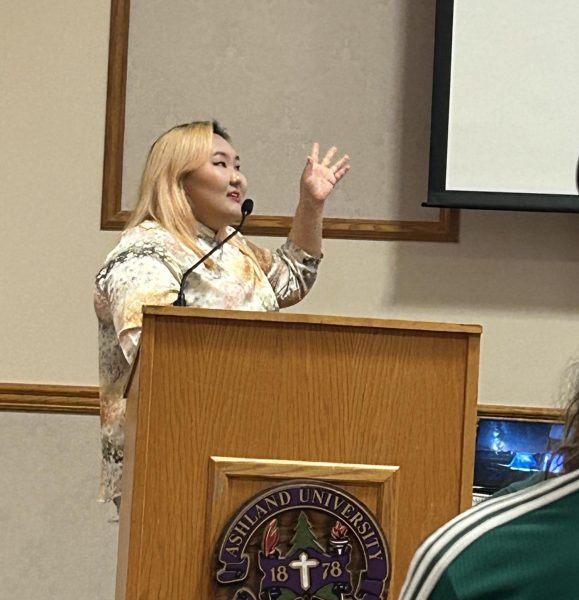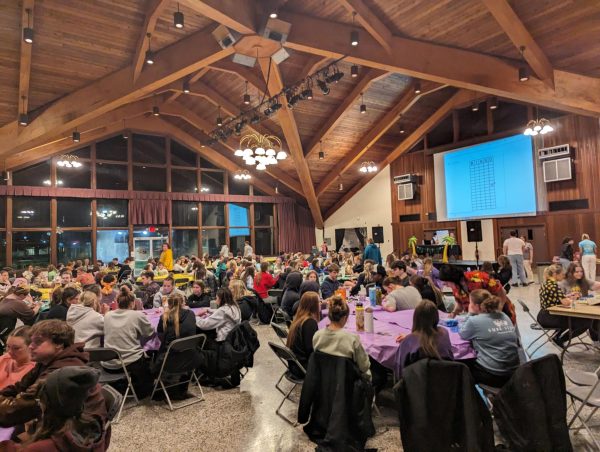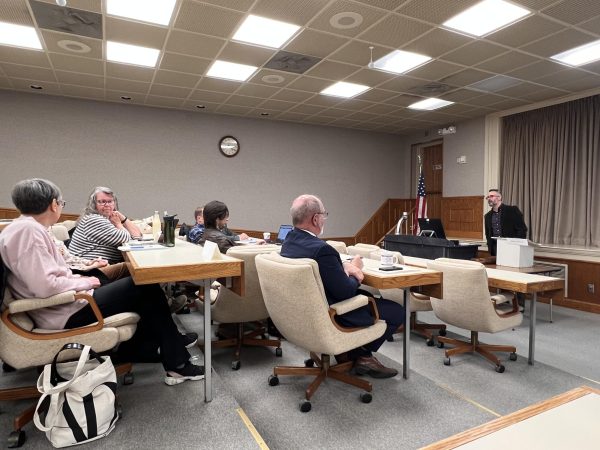Timmerman to speak at AU
September 15, 2011
We all have favorite clothes. As I wrote this article, I sat in my favorite outfit; a plain white shirt I bought from Jo Ann Fabrics to decorate for a concert and some “Cheer” shorts my mom bought me eight years ago. My homemade Pink Spiders shirt has been with me everywhere, or so I thought.
According to the tag on the back, before I found it at the store for three dollars it sat somewhere in Honduras in a factory I know nothing about and was made by human hands whose face I will never get to meet. I only sit back and ponder this after reading the overwhelmingly informative book “Wear Am I Wearing?” by Kelsey Timmerman.
Writer for “The Christian Science Monitor,” “The World Vision Report,” “Worldhum” and creator of website “Going Glocal,” Timmerman is a professional when it comes to globalization and the garment industry.
A guest in the garment workers’ lives of Honduras, Bangladesh, Cambodia, and China, he feels anything but.
His talk “Wear Am I Wearing?” will be the first of many events in the Symposium Against Global Indifference, and undoubtedly an extremely personal one as well.
Timmerman was excited about getting students involved.
“I hope students see how connected we are. Like it or not, our lives impact (garment workers) and their lives impact ours.”
Timmerman is a veteran speaker, having traveled to 15 states and between 50 and 70 schools.
“My message has found a home in colleges,” said Timmerman, describing the many perspectives he gained from college students and addressing business and fashion majors who are “on the front lines” of the garment industry issue.
He sincerely believes that college educated people have a responsibility to help those in the world who have no voice.
Considering everything Timmerman has seen and the destitute, underpaid, and illiterate garment workers he wanted to speak for, this carries so much more meaning.
The journey to awareness is not easy, as evident in “Wear Am I Wearing?”
The author first decided to visit the factory workers out of sheer curiosity for where his clothes were made.
He was not trying to expose corruption in the clothing industry or save the world, and the world he found was scary. His first trip was to Honduras, but after finding the sweatshop where his clothes were made, he ended up shying away from the workers and went home empty handed.
The courage that made him keep exploring was his unending desire for answers and to share those answers with everyone.
He said the only way to know the truth about when, where, and how our clothes are made is to “visit ourselves or speak with someone who has”
We all know this to be true. Every company has an agenda and the curtain between consumer and producer, thanks to them, remains tightly shut.
“We have to empathize instead of sympathize,” Timmerman said, expressing how AU students could help.
Being informed, studying abroad, and even looking into where Ashland apparel is made were also among his suggestions.
“It’s not a change that can happen overnight” he added, but explained that the change in our lives would be significant.
When asked how he personally has changed since the book’s release in 2008, Timmerman went straight back to the people he met.
Since writing the book, he and his wife have had children. With this in mind, he spoke of a Bangladeshi worker he met – Arifa. Reflecting on courage she had to do anything for her children in the midst of absolute poverty, he was strengthened as a parent.
Could there be a sequel in the works? Maybe you can find out by going to his talk and listening to the compelling words which will make the “out of sight, out of mind” impossible.











